Arthrometers Provide Objective Data in Orthopedics
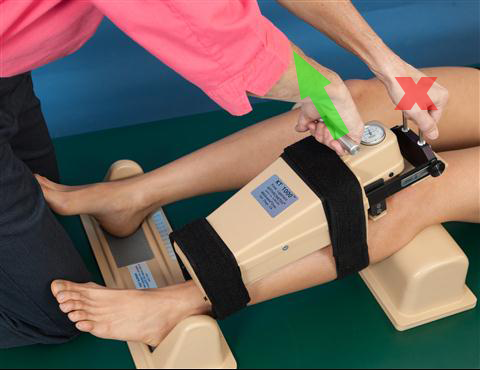
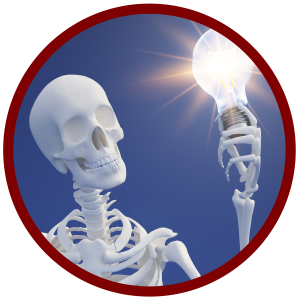

Arthrometers Provide Objective Data in Orthopedics

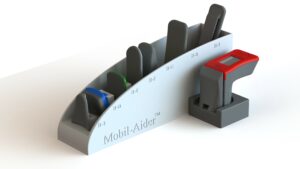 Orthopedics is about precision. Decisions should be based on objective data. In the 1980’s, Med Metrics Corp. Inc. developed a knee arthrometer called the KT1000. For the first time, injury to the anterior cruciate ligament (ACL) could be quantified. The device paved the way for a plethora of research studies and enhanced understanding of the magnitude of translation that defined pathology. With the KT1000 off the market since 2012, little has been done to develop an arthrometer for the knee or any other joints. In 2021, the Mobil-Aider entered the market and has begun to populate the literature.
Orthopedics is about precision. Decisions should be based on objective data. In the 1980’s, Med Metrics Corp. Inc. developed a knee arthrometer called the KT1000. For the first time, injury to the anterior cruciate ligament (ACL) could be quantified. The device paved the way for a plethora of research studies and enhanced understanding of the magnitude of translation that defined pathology. With the KT1000 off the market since 2012, little has been done to develop an arthrometer for the knee or any other joints. In 2021, the Mobil-Aider entered the market and has begun to populate the literature.
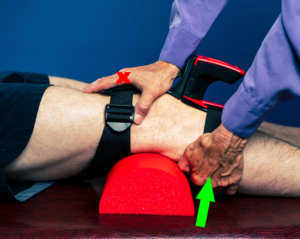 For the knee, MRI’s have been the gold standard for ACL diagnosis but MRI’s are expensive and are static images. Arthrometers provide dynamic data. A study with the Mobil-Aider on individuals with ACL injuries successfully quantified the magnitude of laxity. It has identified partial and complete ACL tears can be identified when the difference between knees is 2.05 mm and 3.38 mm, respectively. This is consistent with numerous studies using the KT1000 (2-3 mm partial; 3-4 mm complete).
For the knee, MRI’s have been the gold standard for ACL diagnosis but MRI’s are expensive and are static images. Arthrometers provide dynamic data. A study with the Mobil-Aider on individuals with ACL injuries successfully quantified the magnitude of laxity. It has identified partial and complete ACL tears can be identified when the difference between knees is 2.05 mm and 3.38 mm, respectively. This is consistent with numerous studies using the KT1000 (2-3 mm partial; 3-4 mm complete).
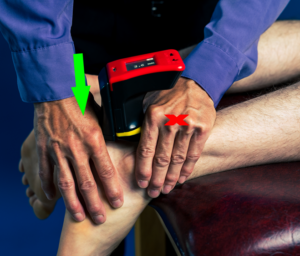
For the ankle, anterior talofibular ligament arthrometer testing has found a 1.11 mm difference was consistent with a 1° sprain and 2.16 mm difference indicated a 2° sprain. These values correspond with numerous studies using stress radiographs and can significantly impact the treatment decision. Being able to differentiate between a grade 1 and grade 2 sprain can help drive clinical decision making regarding treatment. A measure of 1.11 mm versus 2.16 mm can be the difference between recommending an aircast or a boot.
Likewise, the Mobil-Aider Arthrometer has also been used to test shoulder mobility and was found to have a 0.83 correlation with electro-magnetic motion analysis. It has also been found to have strong intra-rater reliability. For glenohumeral posterior glides it was 0.771 and for radiocarpal volar glides it was found to be 0.904.
Thus, there is technology available to provide objective data on joint laxity that fills the void between subjective assessment and expensive imaging. In addition, by capturing objective data, the use of an arthrometer is eligible for insurance re-imbursement using a 97750 code. For more information on arthrometry testing visit: https://mobil-aider.com/ or email dawn@mobil-aider.com
- Taweel N.R., Gulick D.T., Palombaro K.M. Assessing Lateral Ankle Sprains with a New Arthrometer. Pending publication
- Wise C.H., O’Donohue J.M. (Gulick, D.T. – NSF Grant). Intra-Rater and Inter-Rater Reliability of the Mobil-Aider® Device for Measurement of Linear Translation: Implications for Clinical Practice and Teaching. World Journal of Physical & Rehabilitation Medicine. January 2022. http://www.remedypublications.com/open-access/intra-rater-and-inter-rater-reliability-of-the-mobil-aiderreg-device-8278.pdf
- Hammoud S., Palombaro K., Gulick D.T. Use of a New Arthrometer to Assess Knee Pathology. Global Journal of Orthopedic Research. January 2022. https://irispublishers.com/gjor/pdf/GJOR.MS.ID.000569.pdf
- O’Donohue J.M., Wise C.H. (Gulick, D.T. – NSF Grant). Measurement of Accessory Motion of the Glenohumeral and Radiocarpal Joints: Intra-Rater Reliability of the Mobil-Aider® Device for Measurement of Linear Translation. Ann Physiother Clin. October 2021; 3(1): 1014. http://www.remedypublications.com/open-access/measurement-of-accessory-motion-of-the-glenohumeral-and-radiocarpal-joints-8135.pdf
- Tuzson, A., Tarleton, G. (Gulick, D.T. – NSF Grant). Validating the Mobil-Aider to Measure Joint Accessory Motion in Healthy Adult Shoulders. Journal of Health, Science & Medicine. October 2021 https://www.ojhsm.com/articles/OJHSM-2-106.pdf
- Gulick D.T. Novel Device to Quantify ACL Laxity. Journal of Health Sciences & Medicine. September 2020 https://www.ojhsm.com/articles/OJHSM-1-103.pdf
- Gulick, D.T. Quantifying Joint Mobilizations with the Mobil-AiderTM. Journal of Yoga, Physical Therapy and Rehabilitation. April 2020 https://www.gavinpublishers.com/articles/research-article/Journal-of-Yoga-Physical-Therapy-and-Rehabilitation/quantifying-joint-mobilizations-with-the-mobil-aidertm
- Gulick, D.T. Reliability and Validity of an Innovative Device for ACL Testing: The Mobil-AiderTM. Journal of Sport Rehab. 2019 May 16 ePub; 2020 Feb 1;29(2):257-261.
- Gulick, D.T. Proof of Concept: Taking the Guessing Out of Assessing Knee Stability. International Journal of Sports and Exercise Medicine. June 2019 Article ID: IJSEM-5-132 | DOI: 10.23937/2469-5718/1510132
